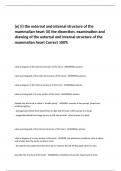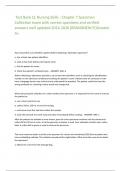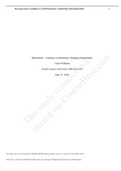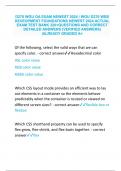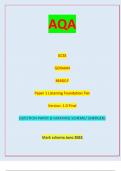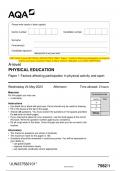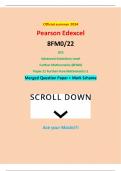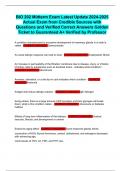Exam (elaborations)
(e) (i) the external and internal structure of the mammalian heart (ii) the dissection, examination and drawing of the external and internal structure of the mammalian heart Correct 100%
- Course
- Institution
Label a diagram of the external structure of the heart - ANSWERSee picture. Label a photograph of the external structure of the heart - ANSWERSee picture. Label a diagram of the internal structure of the heart - ANSWERSee picture. Label a photograph of a cross-section of the heart - ANSWER...
[Show more]
